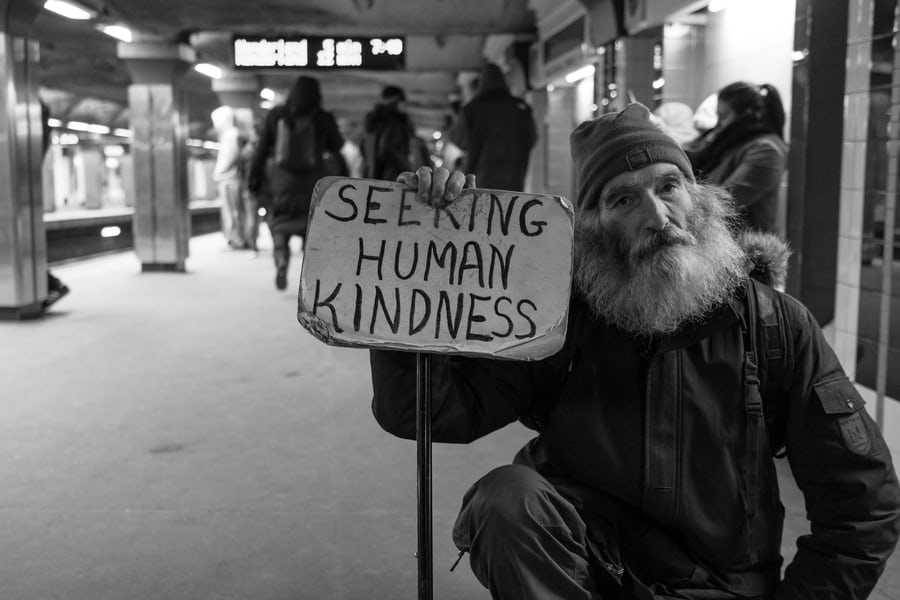Maybe the first time you saw hostile architecture was on your way to work or while taking your weekly stroll. You probably gave it a glance, the metal shapes protruding from a grate in the sidewalk or the spikes under a bridge, momentarily wondered why it was there, and walked away. For us it was a second of curiosity promptly forgotten. But for the 552, 830 people across America experiencing homelessness on a given night it could be what stands between them and finding a safe place to stay the night. Leaving an already vulnerable population even more susceptible to the harsh conditions of their circumstance and environment.
Local government members and supporters of the use of hostile architecture (often private landowners) will justify the use of this architecture under the claim that it is meant to deter crime. The silent implication being homeless. They essentially imply that the homeless are the cause of the crime, that turning away the homeless is a preventive measure. So let’s take a glance at the facts.
Firstly, the homeless population is considerably more likely to become victim to crimes than to commit them. A study conducted by the National Healthcare for the Homeless Council found that 73% of the homeless who were a part of the study reported that they had been attacked in the past year and 62% reported witnessing an attack. An article from realchangenews.org states, “A report released last year [2017], by the District of Columbia Interagency Council on Homelessness found more than half of survey respondents (54 percent) had experienced at least one type of violence in their current episode of homelessness, ranging from stalking to rape.” Comparatively, a study funded by the U.S. Department of Justice found that, of the crimes studied, 6.2% were committed by homeless males, 5% committed by homeless females and 4.1% committed by homeless juveniles.
Numerous studies have also found that an alarming amount of the homeless suffer from mental illness. One study, conducted by the U.S. Department of Housing and Urban Development (as shown on this non-profits page ), estimates that of the approx. 500,000-600,000 people suffering from homelessness on any given night, 45% suffer from mental illnesses in general, while 25% suffered from serious mental illnesses. Mental illnesses that can increase their vulnerability to the world around them, making them easier victims of crime and in some cases, can increase the likelihood that they may commit a crime. Even aside from being linked to crime, untreated mental illness can also be a factor in the persistence of the homelessness cycle.
After looking at the facts it’s clear to see that the ‘crime prevention’ reasoning is a thinly-veiled attempt to mask a growing hatred for the disadvantaged. These statistics stand to prove that the homeless need our help rising above the difficult circumstances of their situation, not to be turned away from what little refuge they can find. Rather than continue to pour funds into hostile architecture, the funds could be directed towards opening new shelters or providing mental health counseling for those struggling with homelessness.




